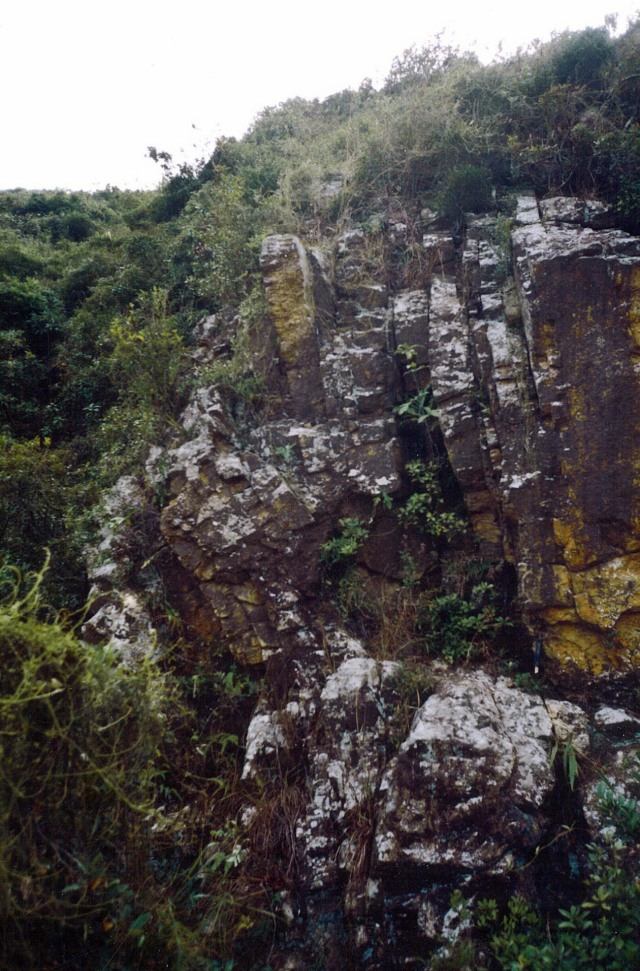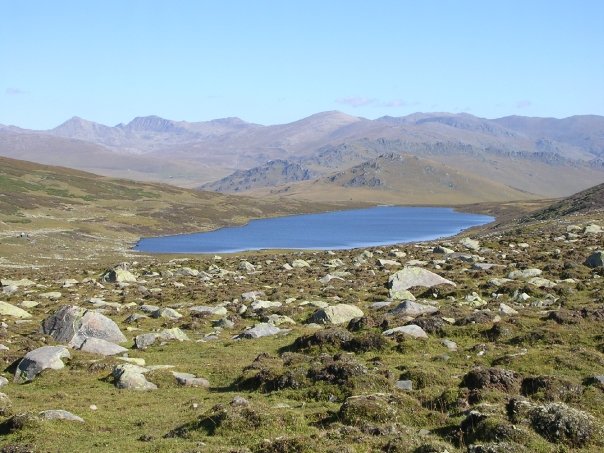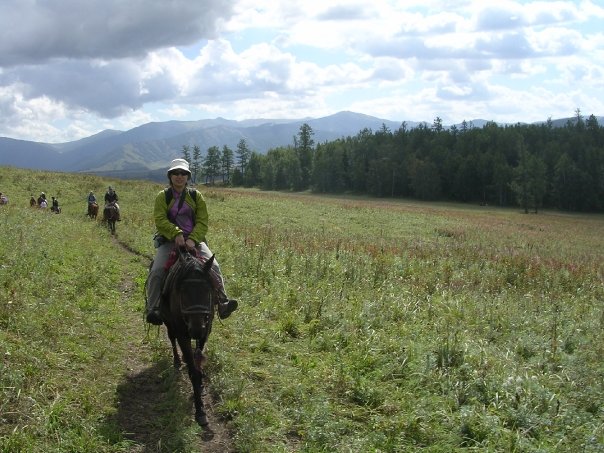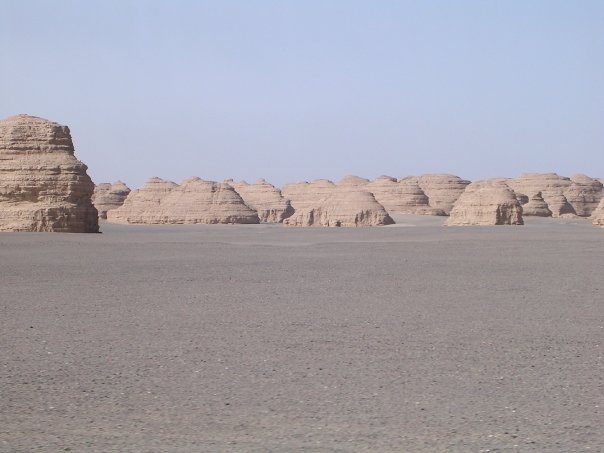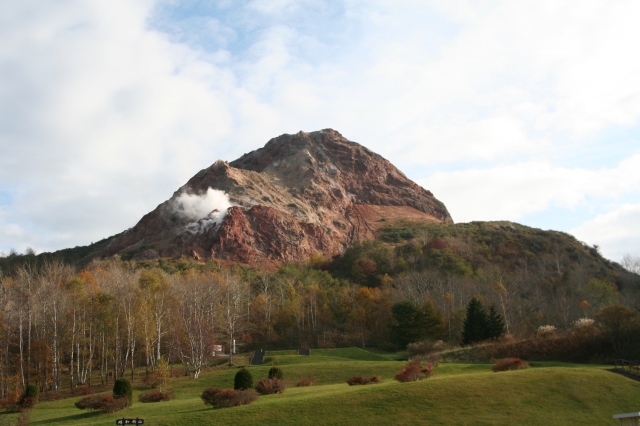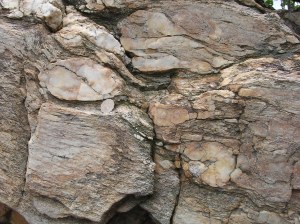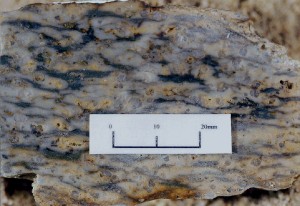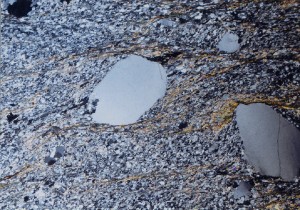I was inspired by Callan’s interesting post last week on the patterns of some cooling columns. Callan has explained, using some nice illustrations, the concept that the cooling joints are formed perpendicular to the cooling front (or thermal gradient), and that some curved columns can be described as a result of corrugated cooling front.
But then, I asked myself, how can I explain the kinky columns found here in Hong Kong? Can they be explained by the presence of wavy cooling front as well?
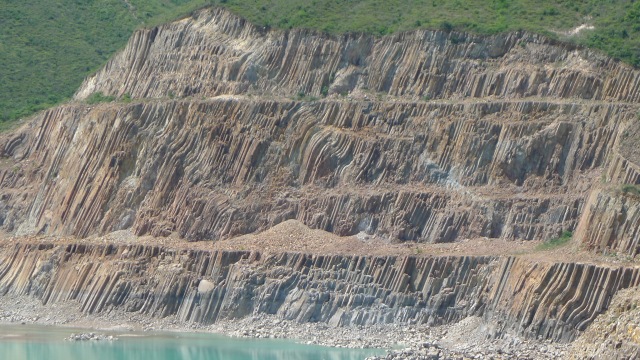 The kinky columns are well exposed on an old quarry face near a reservoir in southeast Hong Kong. The entire rock face is over 30 m in height. The diameter of individual columns here is about 1.2 m. The entire unit has been tilted at 20-30 degrees to the east (as shown by the consistently inclined long-axis of the columns).
The kinky columns are well exposed on an old quarry face near a reservoir in southeast Hong Kong. The entire rock face is over 30 m in height. The diameter of individual columns here is about 1.2 m. The entire unit has been tilted at 20-30 degrees to the east (as shown by the consistently inclined long-axis of the columns).
I focused on the kinky columns exposed on the middle part of the rock face, and tried to draw the possible cooling fronts. The pattern of the cooling fronts will be somewhat like this.
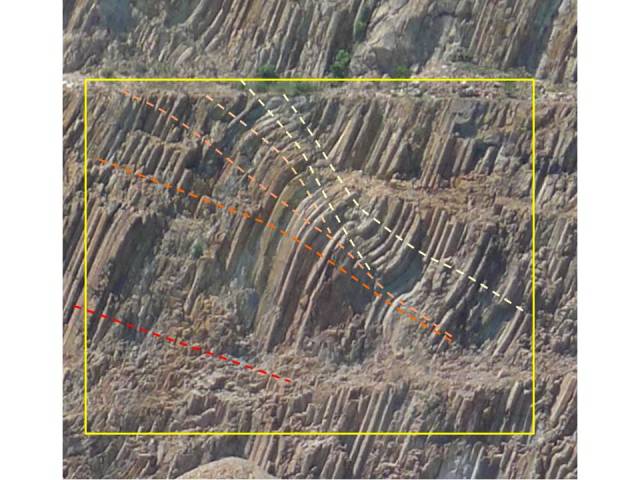 It seems that some cooling fronts are converging while others are diverging. Does it make sense? I cannot easily think of a reason for the waviness of the cooling fronts.
It seems that some cooling fronts are converging while others are diverging. Does it make sense? I cannot easily think of a reason for the waviness of the cooling fronts.
Another good exposure is found not far away. Similarly, I tried to mark the cooling front on the picture.
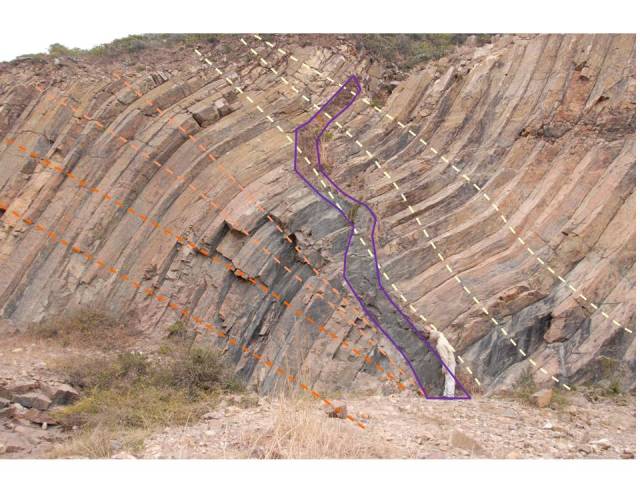
Again, the cooling fronts seems to be wavy. In the middle of the photos, the kinky columns are intruded by a mafic dyke. However, the mafic dyke does not seem to have affected the cooling pattern and the formation of the cooling joints. It is apparent that the intrusion post-dated the formation of cooling columns, although the time gap between these two events is uncertain.
So far so good, right?
But there is a major issue. If you look at the first picture again, you will see that the kinking is actually not restricted to a single kink-band. There are multiple kink-bands, occurring repeatedly and are sub-parallel to each other. They extends for several hundreds of metres, although no conjugate sets are found. This kind of kinky pattern is also seen at other parts of the same tuff unit.
So, if we are trying to explain the kink bands as the products of wavy cooling fronts, then this would suggest that the same wavy pattern of the cooling front should have repeated again and again at different position in the cooling unit. I doubt how this could have happened. Alternatively, the kink-bands could be the result of tectonic movement. However, as I have said, no conjugate sets are found. So, this explanation is questionable.
The one explanation we have used to use: the kink-bands could have formed by slump folding when the cooling unit was still “semi-solidified” and able to deform in a “plastic manner”. The columns might have bent towards the same orientation during the tilting of cooling tuff unit, probably under its own weight, to form the kink-bands (as a kind of slump folding?). This seems to be a better explanation. However, one issue remains: how can the cooling columns (and the tuff unit) on one hand “deform in a plastic manner”, but on the other hand formed the kink-bands, which is essentially a brittle deformation??
Anyone have any clues?

